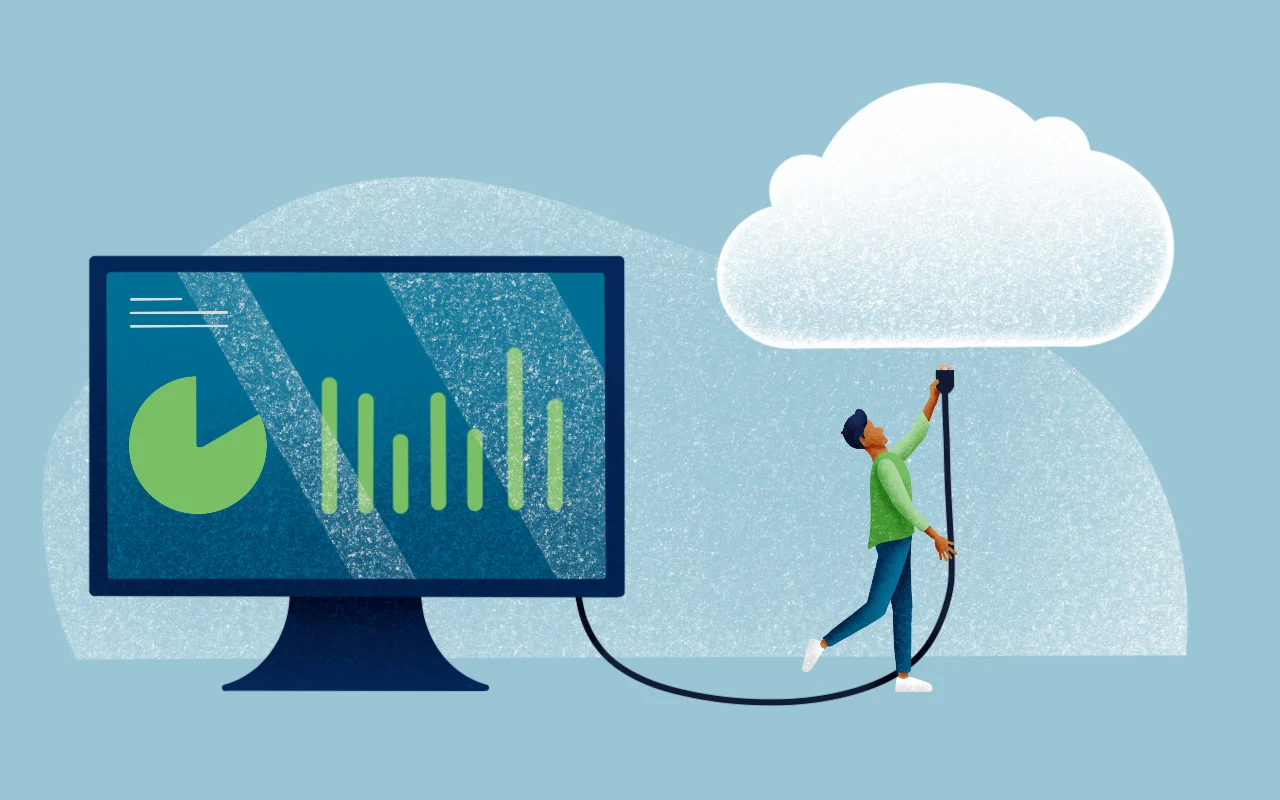Traditionally, IT systems monitoring collects technical data on IT equipment: servers, storage bays, network equipment, etc. This data provides your operations team with information on the state of the infrastructure, the level of use, and the availability of resources so that they can take appropriate action. Monitoring can be even more efficient by taking advantage of increasingly comprehensive data sources linked to the emergence of new technologies.
Bringing together cloud, IoT, AI, & Edge: when traditional monitoring isn’t enough
Very often, the scope of supervision struggles to keep up with IS evolution, to the point of being out of step with reality. New technologies are appearing, forcing companies to adapt and modulate IS monitoring. This is the case with cloud development: organizations must monitor data hosted on separate servers and control physical and virtual computing resources. The cloud has a direct impact on device control and visibility.
Furthermore, many companies are taking a hybrid approach, some of their applications in the cloud and some on-premises on their own servers. Keeping control of all applications remains critical. As an IT operations manager, this translates into new challenges for your teams.
According to a study conducted by Cisco, 77% of CIOs surveyed find the acceleration of cloud migrations to be a major contributor to technology complexity over the past 12 months. And this is just the beginning: by 2023, cloud adoption in infrastructure will continue and is expected to increase, especially in North America and Europe.
The enterprise of tomorrow cannot be imagined without the IoT (Internet of Things). A large number of objects and sensors, generating data and information exchanges, will connect to the company’s IS. Here are some examples: temperature, pressure, luminosity, etc. All of them can be useful for decision-making and for the company’s business.
By 2025, it is estimated that 150 billion objects will be connected. The other side of the coin: these objects and data flows must be monitored. Hence the importance of supervising them and ensuring their proper functioning. A poorly supervised IoT exposes your company to breakdowns, unavailability, and the associated disastrous consequences.
It is also essential to take into consideration the development of Edge Computing. With the massive expansion of the volumes of data to be monitored, Edge Computing allows to process the information as close as possible to the equipment and send only the useful information to the applications hosted in the cloud. IT supervision cannot miss out on this, at the risk of losing important data for your company’s activity. Especially since by 2024, the Edge computing market will reach an impressive 9 billion US dollars thanks to 5G, IoT, and AI technologies.
Agility, the cornerstone of effective monitoring
You know better than anyone: IT monitoring must adapt to these new technologies to offer its users the best possible level of service. And for this, it is essential to opt for an agile, scalable, easy-to-use solution that saves your teams time and increases efficiency.
However, many companies do not have the proper structure to jointly manage the supervision of software applications, the IT network, the infrastructure, the cloud, etc. They then do it separately, creating a loss of information between the various departments and the complexity of tool management because only one could be used.
The solution, therefore, lies in the deployment of a single supervision software, or even a hypervision, software mixed with AI. This will help anticipate problems and to highlight information that employees might miss.
For example, Gartner predicts that by 2022, 40% of large enterprises will combine big data and machine learning to augment or partially replace monitoring. AI also helps automate certain time- consuming or non-value-added tasks (ticket generation, dashboard consolidation, etc.) for your teams, which can then focus on your core business: improving IT availability.
Without going as far as artificial intelligence, it is essential to be able to connect your monitoring tool with the rest of your information system and your other monitoring or ITSM tools. This interfacing will give you a global overview of your equipment and your applications. This is the first step towards hypervision in order to correlate all the data from your different monitoring solutions.
Another parameter: to adapt to the technological changes in your information system, opt for modular software with features that you can deploy as needed. Your company is unique, and your tool must adapt to your specific needs. Don’t rush into a complex solution. Go step by step instead with adaptable and flexible monitoring software.
Conclusion
Finally, beyond the key functionalities of your supervision software, it is important to be able to count on a reactive editor. That means finding answers to your questions, benefiting from quick support in case of a problem, having confidence in the ability of a provider to develop their solution to meet the trends and needs of companies in the field. For successful IT supervision, it is necessary to establish a real partnership with your editor.
In our opinion, agility and adaptability are key elements for efficient IT monitoring that is as close as possible to your needs. But don’t underestimate the support and scalability of the solution.
To learn more about how to address these challenges, download our new white paper, Operations Managers, Anticipate the IT & Cloud Supervision Challenges of Tomorrow.
